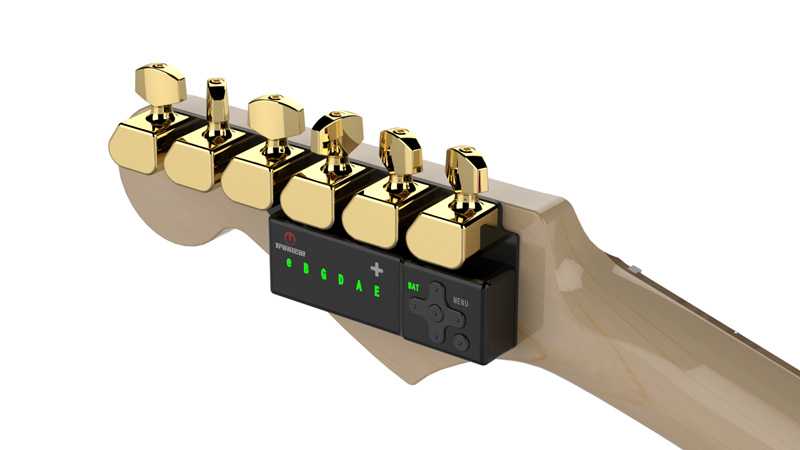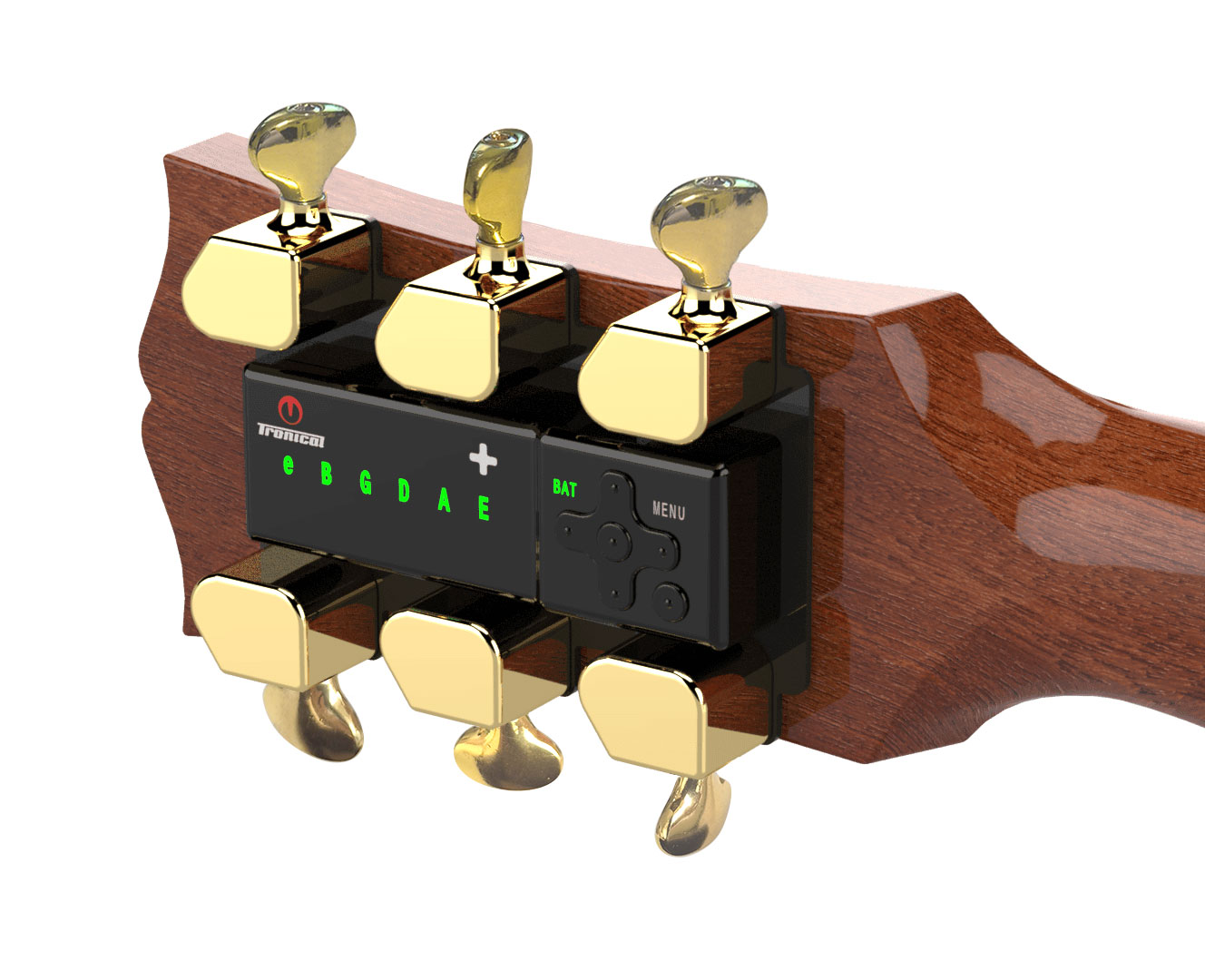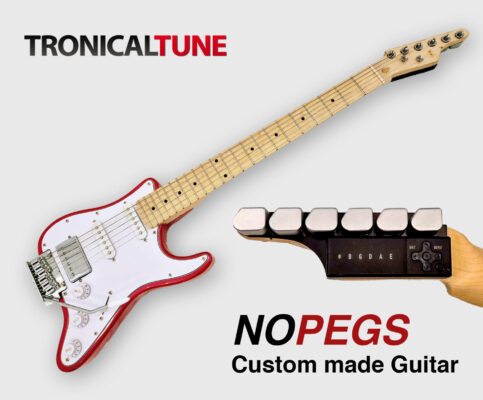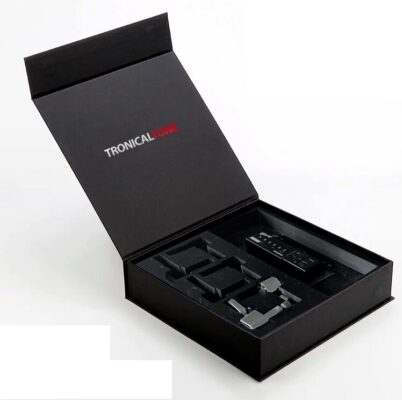Guitar Tuner 2025: Fully Automatic with TronicalTune®
Stop turning pegs. Start playing. TronicalTune is the only true fully automatic guitar tuner that tunes all 6 strings in seconds — precise, fast, and consistent.
- Fully automatic: no manual turning.
- Perfect pitch on stage & in studio.
- Multiple tunings: Standard, Drop D, Open G, DADGAD & more.
Auto‑Tuning Preview
Try it: Auto‑Tune Simulator
Click Start — we simulate the motors that bring each string to pitch in seconds.
Idle
Strings: E A D G B E
Guitar Tuner Comparison
| Feature | TronicalTune PLUS | Roadie (semi‑automatic) | Pedal / Clip‑On |
|---|---|---|---|
| Automation | Fully automatic: tunes all 6 strings, no manual turning | Semi‑automatic: handheld, manual positioning | Manual |
| Speed | Seconds for full guitar | String‑by‑string | String‑by‑string |
| Consistency | Motor‑driven precision | Depends on handling | Depends on user skill |
| Noise immunity | Works in loud environments | Microphone‑based | Input sensitive |
| Tunings | Standard + alt tunings (Drop, Open, DADGAD, etc.) | Standard + some alts | Standard + some alts |
| Hands‑free | ✔ | ✖ | ✖ |
Trusted by Pros
Used on stages and in studios worldwide. Engineered in Germany.
Fast Setup
Precision Motors
Alt Tunings
FAQ: Guitar Tuner & TronicalTune
Is TronicalTune the only fully automatic guitar tuner?
Yes. Competing solutions like Roadie are semi‑automatic handheld devices. TronicalTune mounts on your guitar and tunes all strings automatically without manual turning.
Does it work in loud environments?
Yes. The system senses string vibration directly and is designed for stage volume.
Which tunings are supported?
Standard EADGBE, Drop D/C, Open G/D/E, DADGAD, half‑step down and more — all selectable.
Will it fit my guitar?
We support most 6‑string models. Use the model finder to select the correct TronicalTune type for your guitar.
Ready to stop tuning?
Install TronicalTune once — enjoy perfect tuning every time.
Buy TronicalTune PLUSWatch: Fully Automatic Tuning Demo
Automatic Guitar Tuner for Any Guitar – a unique in the World Guitar Autotuner.
Guitar Tuner Tronical professional is the revolutionary device is for electric and acoustic guitars alike that seamlessly self-tunes your guitar in a matter of seconds as robot guitar.
-
Retrofit fits most popular models
-
24+ tunings incl. modern low tunings
-
Install it yourself in minutes
-
One-button tuning on stage & in studio

The revolutionary Tronical Tune automatic Guitar Tuner system is a ‘drop in’ retrofit available for electric and acoustic guitar which keeps the instrument perfectly in tune and allows fast switching to alternate tunings, at the touch of a button.
-
Is TronicalTune a fully automatic guitar tuner? – Yes. It tunes all strings automatically on the headstock with one button; no pedal or manual string-by-string turning.
-
Does it fit my guitar? – Works with most popular electric & acoustic headstocks; use the brand/model filter to confirm fit. tronicaltune.net
-
How fast is tuning? – Typically a few seconds; reliable even on loud stages guitar tuner.
-
Drop & alternate tunings? – Yes, 24+ presets incl. modern low tunings and custom slots.
-
Installation? – DIY in minutes; no permanent mods required.
It requires no modification to the instrument and does nothing to compromise the sound or playing performance guitar tuner. Servo driven machine heads control tuning the same way as regular tuning machines, and the headstock mounted unit even offers the ability to store custom tuning too. TronicalTune takes out the hassle of tuning, making it easy, and- against all odds- fun.
The idea for Gibson’s revolutionary Robot Guitar Tuner
Auto-tuning system came to Chris Adams in a fit of frustration. Aggravated that he couldn’t keep his guitar in tune and that he was spending so much time trying to, the twenty-something turned to the Internet to see if there were any automatic tuning systems on the market. Dissatisfied with what he found, he imagined a system that would automatically tune a guitar in no-time-flat.
That got him thinking about other possibilities too: a system that could switch effortlessly between multiple tunings, keep a guitar perfectly intonated, and even change strings for you. The fact that Adams had little engineering automatic guitar tuner experience didn’t deter him. Over a period of 10 years, the professional guitar tech perfected a lightweight and foolproof tuner system that tunes a guitar precisely and automatically in only a few seconds.
“I wanted to create something that would respect the tonal concept of the instrument without changing it. There was so much new technology Guitar Tuner that had to be like developed to make it what it is today,”. In 2005, opened his Hamburg, Germany-based company technology that had to be automatic guitar tuner developed to make it what it is today,” Guitar Tuner Adams explains.
In 2005, Adams opened his Hamburg tuner
Germany-based company Tronical, and began getting the word out about his invention of tuner. It didn’t take long automatic guitar tuner. Uli Jon Roth, Steve Vai, Billy Corgan, and other notables already use the tuner system and all sing its praises on stages worldwide. “I haven’t met anybody who doesn’t love it,” Adams says. “This is a dream for guitar players.
They don’t have to think about tuning anymore with guitar tuner. Many artists have told me that having this makes them so relaxed.
As they know that robot guitar tuner but no matter what, they will be in tune. If you are more relaxed, you have a better performance of tronical guitar tuner. You can be more creative guitar tuner.”

GET YOUR TRONICALTUNE AND ROCK!

30 Days Money Back Guarantee
Extended Product Support
Made in Germany
Features
- Full automatic tuning in 2-3 seconds
- Tuning change within seconds
- Multi-String (polyphone) – for quick access or Single-String
- Noise Immunity
- 24 alternate tuning presets
- String Up / Down Mode – wind or unwind strings automatically
- Custom Tuning – create a custom tuning
- Reference Tuning – tune with manually tuned string
- Capo Mode – detect a capo
- Made in Germany
What Our Customers Say

Artists who use Tronical
BEST SELLING automatic guitar tuner
SALE! -42%
Tronical Spare Parts
Original price was: 49,99 €.29,00 €Current price is: 29,00 €. (incl. 19% VAT)
Gold
Black Chrome
Chrome Marble
Nickel Marble
Chrome
Tronical Spare Parts
29,90 € – 39,90 € (incl. 19% VAT)
Gold
Black
Black Chrome
Chrome Marble
Nickel Marble
Chrome
Min-ETune / GForce
29,90 € – 39,90 € (incl. 19% VAT)
SALE! -32%
Gibson Robot Gen 1
Original price was: 59,00 €.39,90 €Current price is: 39,90 €. (incl. 19% VAT)
Min-ETune / GForce
39,00 € (incl. 19% VAT)
SALE! -25%
Tronical Spare Parts
Original price was: 19,90 €.14,90 €Current price is: 14,90 €. (incl. 19% VAT)
SALE! -45%
Tronical Spare Parts
Original price was: 99,00 €.54,90 €Current price is: 54,90 €. (incl. 19% VAT)
SALE! -42%
Min-ETune / GForce
Original price was: 49,99 €.29,00 €Current price is: 29,00 €. (incl. 19% VAT)
Chrome
Gold
Black
Black Chrome
Chrome Marble
Nickel Marble
Tronicaltune PLUS
249,00 € – 329,00 € (incl. 19% VAT)
SALE! -30%
Tronical Spare Parts
69,00 € – 99,00 € (incl. 19% VAT)
Chrome
Gold
Black
Black Chrome
Chrome Marble
Nickel Marble
Tronicaltune 6-in-Line
249,00 € – 329,00 € (incl. 19% VAT)
Min-ETune / GForce
49,00 € (incl. 19% VAT)






























